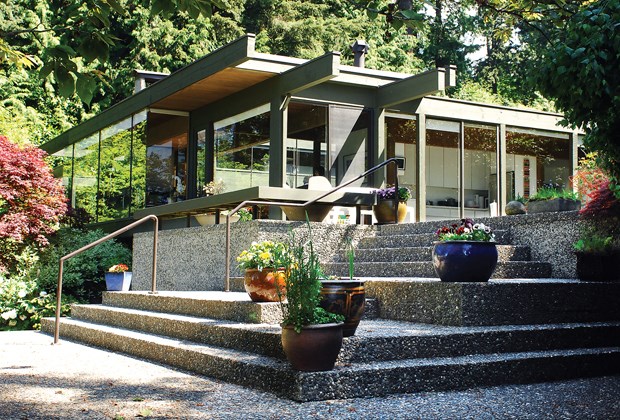Regular readers of my column are likely aware of my interest in the West Coast modernist movement and its evolution.
For me, West Coast modernism is a stylistic expression of where we live and is as architecturally valid now as it was 70 years ago when it began.
I studied architecture in the late-1980s at McGill University in Montreal and from the get-go was exposed to a stylistic direction that drew heavily upon the architecture of antiquity. I was academically trapped in the so-called post modernist era where proponents made direct reference to the classical architecture of the past, incorporating classical elements and forms in what could be best described as caricature rather than a formal rethinking. The style never inspired me and I found the work of its major practitioners, architects like Michael Graves and Robert Venturi, to be visually awkward and fundamentally lacking poignancy. Fortunately for our architectural landscape (in my opinion anyway) post modernism went the way of its references and moved quickly into antiquity.
As a young designer, it was a strange time for me. I knew instinctively what didn't work for me, stylistically, but hadn't yet found what did. Real inspiration came when I moved out to the West Coast and experienced first-hand the modern masterpieces that have defined the West Coast modern movement.
The Vancouver School, composed of pioneers such as Arthur Erickson, Ned Pratt, B. C. Binning, Fred Hollingsworth and Ron Thom, defined a movement that drew upon the stylistic influences of modernism while making distinctive regional adaptations to better meet the needs of the West Coast's unique environment.
In the 1949 Design for Living exhibition presented at the Vancouver Art Gallery, architect Ned Pratt cited the five essential elements that should dictate the form of a West Coast modern home.
I'm fascinated by the five points as they are in many ways as valid today as they were more than 60 years ago when Pratt articulated them.
1. Rainfall
The West Coast has lots of it so big overhangs are a must.
2. Cloudy days
Provide big windows to bring in as much light as possible.
3. Views
Make a connection to the outside world. Direct the interior views to the important things outside like the mountains, ocean and forest.
4. Exterior
The exterior of a home should be clad in locally sourced wood and should maintain its natural beauty and remain unpainted.
5. Plan
A house should be laid out on an open plan with high ceilings and a minimal use of partitions.
The Vancouver School may be long retired but a West Coast style remains strong. Today's West Coast contemporary designers embrace many of the tenets of Pratt's ideas while exploring more environmentally responsible solutions to the age-old problems.
It's an inspiring time and I look forward to seeing how our West Coast style evolves, building upon the foundation laid by the modern masters of The Vancouver School.
Kevin Vallely is a residential designer in North Vancouver. vallely.ca



